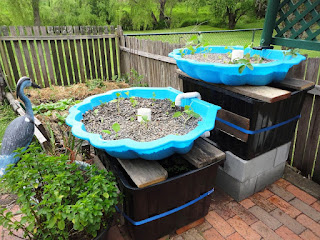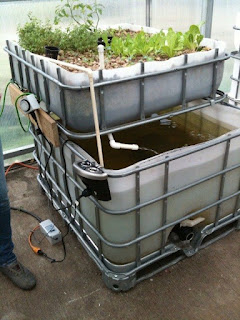DIY Aquaponics for Beginners: A Quick and Easy Guide
Dive into the fascinating world of aquaponics with this beginner-friendly guide! Aquaponics combines aquaculture (raising fish) and hydroponics (growing plants without soil) in a symbiotic system. Imagine fresh fish and vibrant vegetables growing together, all while minimizing water waste. Sounds too good to be true? It's surprisingly simple to set up a small-scale aquaponics system at home. This guide provides step-by-step instructions to get you started on your own sustainable food production journey.
Choosing Your System: Simple Starts
Beginners often find success with smaller, simpler systems. Avoid complex designs initially; focus on mastering the basics. Two excellent choices for novices are media bed systems and deep water culture (DWC) systems. Media bed systems use a gravel or clay bed where beneficial bacteria colonize, converting fish waste into plant nutrients. These systems are relatively low-maintenance and forgiving of small mistakes. Deep water culture (DWC) systems directly suspend plant roots in nutrient-rich water. They offer rapid plant growth but require closer monitoring of water parameters.
Media Bed System Setup: A Step-by-Step Guide
Let's build a small media bed system. You will need: a fish tank (at least 10 gallons), a grow bed (a plastic container slightly larger than your tank), gravel or clay pebbles (for the grow bed), an air pump and airstone (for oxygenation), a submersible pump (to circulate water), and plants and fish appropriate for your system's size (consider hardy plants like lettuce or herbs, and fish like tilapia or goldfish).
- Fill the grow bed with gravel or clay pebbles.
- Place the grow bed above the fish tank. Connect a siphon tube from the tank to the grow bed to allow water to flow.
- Position the submersible pump in the fish tank to circulate water into the grow bed.
- Connect the air pump and airstone to the fish tank to provide adequate oxygen for the fish.
- Plant your chosen seedlings in the grow bed.
- Add your fish to the tank. Start with a small number to allow the system to establish its nitrogen cycle.
Deep Water Culture (DWC) Setup: A Simplified Approach
DWC systems are equally straightforward. You need: a fish tank, net pots (to hold plants), a grow tray with holes to fit the net pots, a submersible pump, and an air pump and airstone.
- Fill the fish tank with water.
- Place the grow tray above the tank, ensuring that the net pots hang down into the water.
- Install the submersible pump to create water circulation.
- Add the air pump and airstone to oxygenate the water.
- Place your seedlings (in net cups) in the net pots.
- Introduce your fish to the system. Remember to start small.
Maintaining Your Aquaponic System: Key Considerations
Success in aquaponics relies on consistent monitoring and maintenance. Regularly test the water's pH, ammonia, nitrite, and nitrate levels using a test kit. Maintain appropriate water temperature for your chosen fish and plants. Feed your fish a balanced diet to avoid overfeeding and maintain water quality. Harvest plants regularly to prevent overcrowding and ensure optimal growth. Remember, patience is key – your system needs time to establish a healthy balance.
Troubleshooting Common Issues
Cloudy water: This often indicates excess fish waste or uneaten food. Increase water changes and filter the water. Low plant growth: Check water parameters, particularly nutrient levels. Ensure sufficient light for plants. Fish disease: Maintain clean water, avoid overfeeding, and monitor fish closely for signs of illness. Consult a veterinarian if needed. Aquaponics is a learning process. Don't be discouraged by initial challenges. Experiment, learn from your mistakes, and enjoy the rewards of homegrown produce!





















